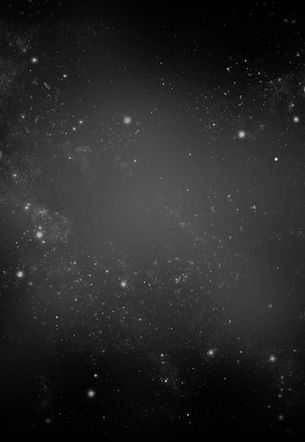Our Gatherings

We gather as community to explore, observe and
celebrate the cyclical weekly, monthly, seasonal and annual
touchstones of the Jewish
lunar calendar.

Twice per month we gather to welcome the Shabbos queen on a Friday evening or to usher her out with Havdalah on a Saturday evening. Intergenerational, hands-on, creative, engaging and always warm, fun and inviting, each gathering revolves around a learning theme that connects to the season, a holiday, a torah portion, and/or a social justice or tikkun olam project. We draw from a variety of activities – like singing, dancing, writing, drawing, crafting, cooking and more – to build connections.
Shabbat & Havdalah

On the dark evening of each month’s New Moon, the beginning of a new Jewish month, we gather for guided meditation, exploratory art and personal sharing. Our sacred Jewish texts and calendar provide inspiration for each month’s theme. It’s a time we set aside for uplifting our hearts, healing our souls, and focusing on what’s most meaningful in our, often hectic, lives.
Rosh Chodesh

Each year, in the extra tender time of fall, we are gifted a much-needed retreat into the Days of Awe. Under the guidance of Zann Jacobrown, the Pardess community co-creates a full schedule of intergenerational High Holy Day services that are personal, creative, authentic, spiritual, accessible, and filled with stories, songs, meditations, movement and sharing circles that are weaved together by our traditional Jewish prayers, melodies and the kind presence and wisdom of each other.
High Holy Days

Sukkot, the Jewish harvest festival, is a time to celebrate the great bounty that the earth has brought forth. Always a highlight of the year, we gather to build a sukkah, share a potluck, and co-create the ritual of shaking the lulav and etrog. Sending waves of hope and love to the six directions, we symbolically plant the seeds for a successful harvest next year by giving voice to blessings and gratitude for our ancestors, ourselves, our families, our communities, our world, and our futures.
Sukkot

There is no end to Torah just as there is no end to time. We dance the traditional seven circles, passing the Torah among us so that we each have an opportunity to form a personal connection with it. Then, just as our ancestors have done for thousands of years, we read from the last portion of the Torah, roll it back to Genesis, and then begin anew, continuing an endless cycle.
Simchat Torah

Each year we gather on one of the eight nights of Chanukah for a party – to tell stories, light our menorahs, play dreidle, and, of course, eat latkas and sufganiyot. In Hebrew, dreidles are called sevivon, from the root meaning "to go around" or "that which surrounds us." The Hebrew letters that stand for Nes Gadol Hayah Sham, a Great Miracle Happened There, surround the four sides of the dreidle. If we were dreidles, what great miracles would we surround ourselves with?
Chanukah

Just as the trees around us are re-awakening from their frozen slumber, we set out on a quest through the Kabbalistic four worlds of the Tree of Life in search of ways to re-awaken our true nature. Using the fruits, nuts and juices of our Tu B’Shvat seder, together we explore our own hard shells of separateness, our pits of discomfort and distrust, our seeds of connection and the juiciness of our open hearts.
Tu B'Shvat

Winter falls away as Queen Esther, like the hidden warmth of Spring, stands up to the frozen Haman (boooo!). They, along with Mordechai, King Ahasuerus, Queen Vashti, townspeople and members of the King's Court all make appearances at our annual Purim party. Each year’s Purimschpiel incorporates a fun, new twist, like a ‘hidden-talent’ show, karaoke, and games. And, in non-Covid times, what would Purim be without Hamantaschen and a potluck dinner to round out the merriment?
Purim

A large community seder isn’t always practical, so we encourage our Pardess friends and families to set up smaller, more personal ones. Following the second night’s seder, we begin the Counting of the Omer. This 50-day period affords us the opportunity to exercise and stretch our soul muscles, to focus on being loving, compassionate, joyful and generous individuals. Social justice and environmental tikkun olam projects are at the heart of our gatherings at this time of year.
Passover / Counting Omer

In the Kabbalistic traditions of our Jewish ancestors, the minor holiday of Lag B'Omer is the day of "Hod of Hod," or "gratitude of gratitude." This 33rd day of the Counting of the Omer – two thirds of the way between Pesach and Shavuot – is a fun reprieve from the anxiousness of the 50-day harvest. We spend time in nature, roast potatoes over a campfire, dance, sing and usually one brave soul volunteers for a symbolic haircut!
Lag B'Omer

Coming 50 days after the second night of Passover and usually just a few weeks prior to the summer solstice, Shavuot is associated with the barley harvest in the Torah and commemorates the giving of the Torah to the Jewish people at Mt. Sinai. In Pardess fashion, we gather outside for a festive meal, crafts, stories, journaling & more. A few adventurous ones will typically bring tents and stay up all night studying the Torah. For our Covid-friendly Shavuot this year, we cooked blintzes via Zoom.
Shavuot

During the driest month of the year – the month of Av - we move in six short days from harshness to happiness. The rabbis of the Talmud called Tisha B'Av, the day the Temples were destroyed, one of the saddest days of the year. And Tu B'Av, the holiday of love, they called one of the two happiest days of the year. In our Pardess community, we gather for guided meditations, healing art and heart-circles to take a deep dive into this journey from grief to love, from loss to hope.
